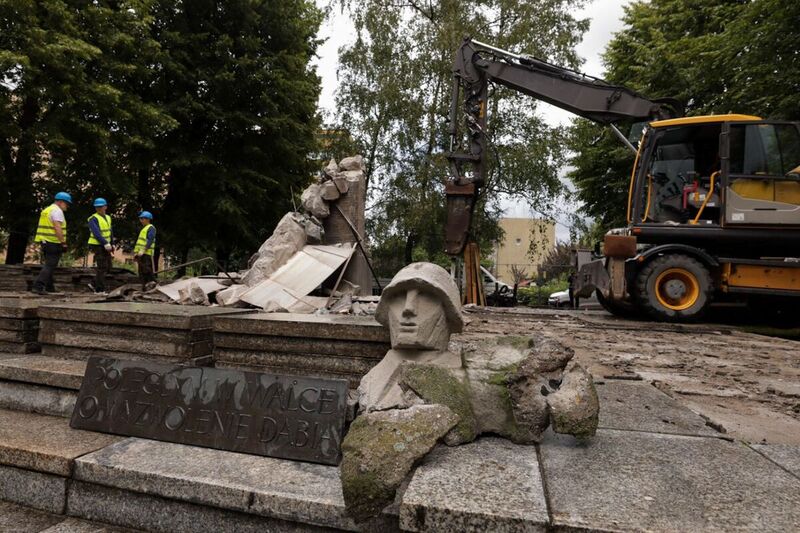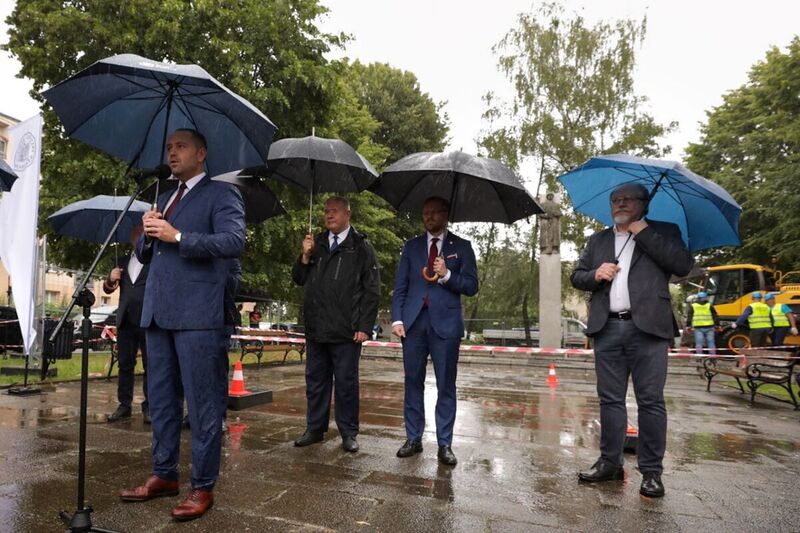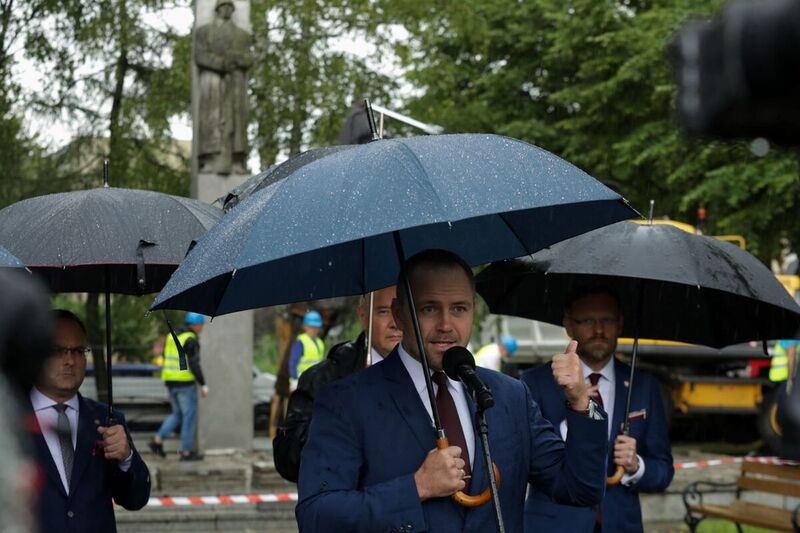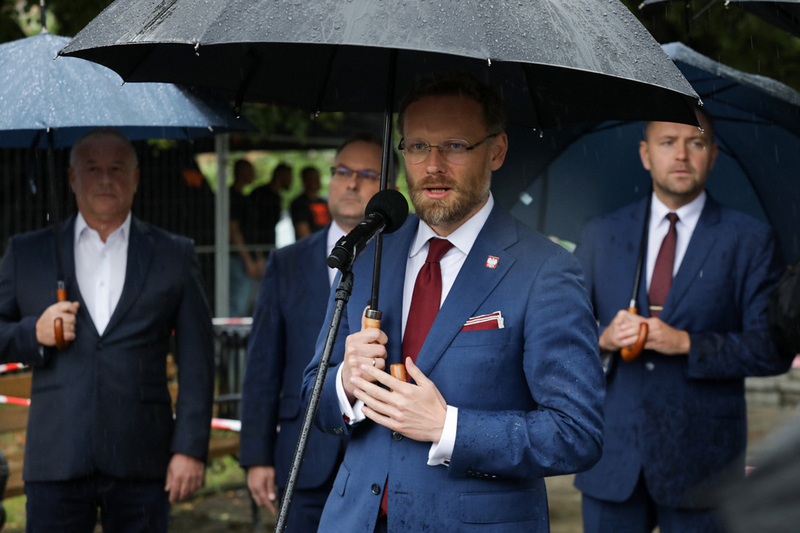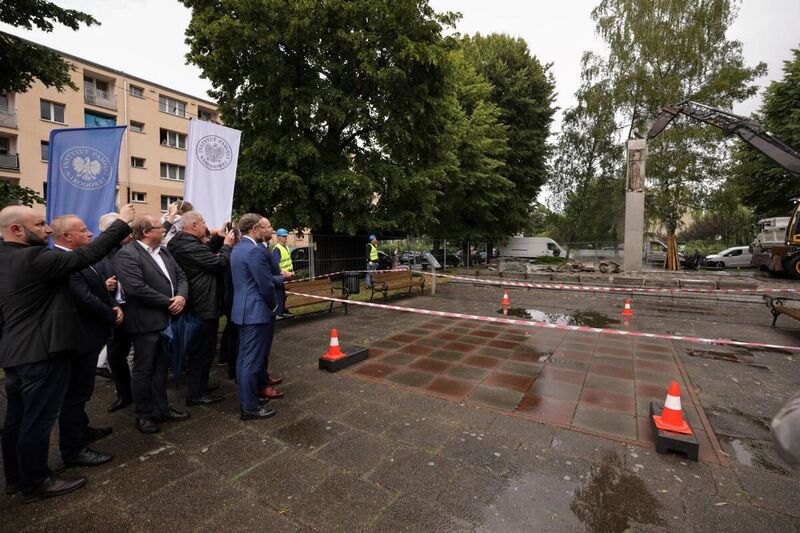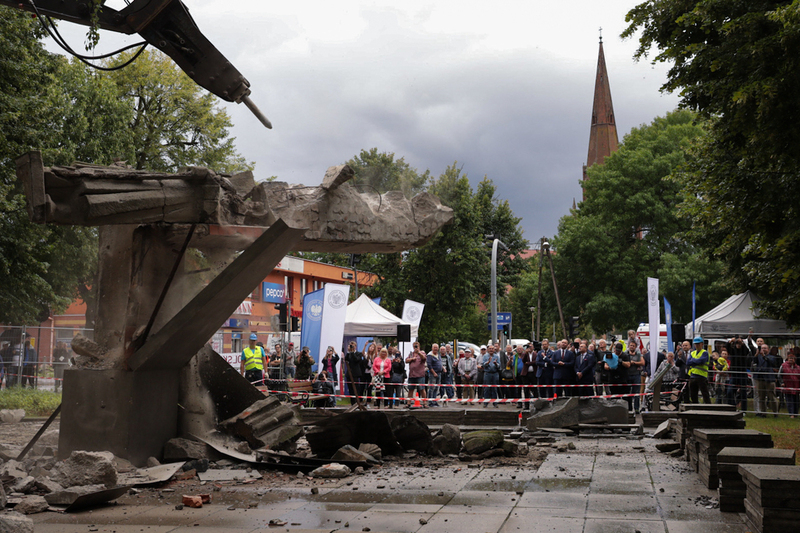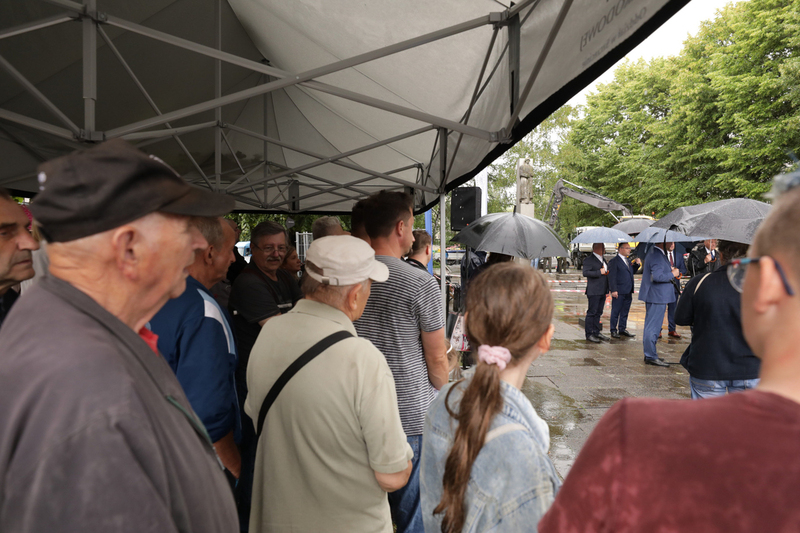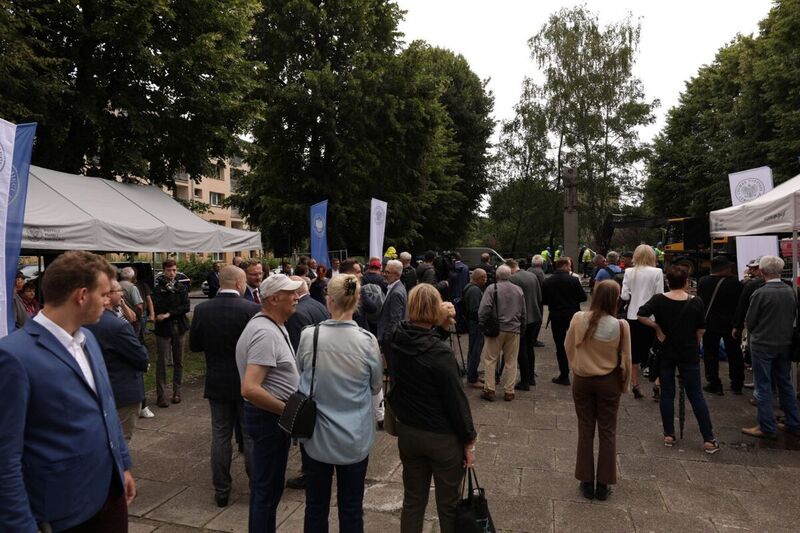A monument commemorating the Red Army was dismantled on 3 August 2023. The event was accompanied by a press conference with the participation of the IPN President Karol Nawrocki Ph.D., and streamed on the YouTube IPNtv channel.
Dąbie is now a district of Szczecin but was a separate settlement until 1948. Situated in the centre of the housing estate, the monument "To the Fallen in the Fight to Liberate Dąbie" was erected in 1962, based on a design by Mieczysław Welter and Krystyna Trzeciak. The monument was to commemorate the soldiers of the Red Army and Gen. Berling's army who fell in March 1945 during the fight for the Dąbie bridgehead.
“If someone brings freedom, it means liberation, not rape, robbery and, above all, not murder. Meanwhile, one and a half million Soviet soldiers were stationed in Poland after World War II and treated the Polish territories no differently than the spoils of war", said the IPN President Karol Nawrocki.
The IPN President has recently issued a statement on the urgent need to decommunize public space in Poland. He has appealed to local governments to remove all names and symbols commemorating people, organizations, events or dates symbolizing communism.
The IPN President stressed that the victims of the Red Army and the Soviet Union are of utmost importance, but it is also worth remembering that, in accordance with Joseph Stalin's order of 1945, Poland was also plundered.The Soviets removed 1/3 of the length of railroad tracks, dismantled and deported 1119 enterprises and factories from Poland, and by January 1948 alone, 283,000 wagons of war booty left Poland. The same fate befell Szczecin and the entire West Pomeranian province.
This Soviet propaganda tool in the form of a monument does not express this, because it has been standing here since the 1960s in order to deform historical knowledge and historical truth. It stands here to remind us of the Soviet Union's domination over Poland in the 1960s, 1970s and 1980s. It also stands here in order to still, in terms of memory, scorn the victims and give tribute to the perpetrators.
West Pomeranian Voivode, Zbigniew Bogucki noted during the conference that:
It is high time to stand in line with historical truth and to speak about this truth, so that we do not tolerate misrepresentation, hypocrisy, attempts to omit certain topics or to justify them.
For many years, the real heroes were locked up in prisons, tortured, persecuted, murdered, they were not allowed to work, were sent outside the margins of society, the heroes, the best daughters, the best sons of the Republic, while the criminals, the occupiers, were on the front pages of newspapers and took the highest state positions.
He also expressed his gratitude to the entire Institute of National Remembrance for its determination and decisive action in removing the signs of Soviet domination.The Director of the IPN Office for Commemorating the Struggle and Martyrdom, Adam Siwek added that this monument is already the 35th propaganda object associated with the Soviet army removed from public space in Poland in the last 15 months.
Promoting the term “liberation” to denote the entry of the Red Army into several European countries – in 1939, 1944–45 and later on – was a fundamental element and starting point for image-building activities intended to disguise Soviet imperialism and Joseph Stalin’s policy towards these countries.
